ISSN ONLINE(2319-8753)PRINT(2347-6710)
ISSN ONLINE(2319-8753)PRINT(2347-6710)
I S Stephan Thangaiah1, VinaySharma2, V N Sundharam3
|
| Related article at Pubmed, Scholar Google |
Visit for more related articles at International Journal of Innovative Research in Science, Engineering and Technology
Globalization and peer’s competition have forced industries to deliver what customer wants and even further, what will delight them. Technology innovation has created more awareness that customer has full knowledge on product and freebies offered. This has indirectly reflected on industry’s profit and industries are concentrating the best possible method to overcome it. Manufacturing industries are applying many methods to improve their profit. Controlling input material usage is one of the major tasks. This study analyzes the manufacturing industry’s operational process to achieve zero defect products, which reduce the raw materials wastage, increase productivity and profitability. It analysis the operation of beverage industry in India and prioritized them using Analytical Hierarchy process (AHP). All critical operational quality parameters are analyzed and suitable actions recommended.
Keywords |
| Analytical Hierarchy Process, Value Chain, Zero Defect, Beverage Industry. |
INTRODUCTION |
| Before recession manufacturing industries are focusing on acquiring as many customers as possible and operational efficiency had taken a backseat. There was minimal focus on operational discipline and cost management because of enough purchasing power and sentiments to absorb cost hikes. There was always an inherent trade-off between top line growth and operational discipline. Given the growth that the economy was witnessing, there was excessive focus on capturing market share without too much emphasis on operational efficiency [1]. Globalization has changed the market condition from manufacturer-controlled price to customer-controlled price. Customers have more choice to choose from different vendors of the same product with fabulous freebies. This has put the margin under severe pressure and has witnessed a turnaround with manufacturer willing to give up market share to introduce profitable product for higher margin. The manufacturing industries are focusing on marketing product of customer expectation to retain their identity and operational efficiency to improve its margin [2]. It is very much important to monitor continuously the changing customer requirements. Hence, there is a need to study and develop procedures that can help industry gains a profound knowledge of customer requirements and satisfaction, and then develop products with innovative features. Analytic Hierarchy Process (AHP) is applied to achieve zero defects in production. The critical operation’s attributes are discussed with technical experts in the industry and technical attributes are identified to improve the operation. |
II. LITERATURE REVIEW |
| The AHP was originated by Saaty[3] and it is an analytical tool, supported by simple mathematics that enables people to explicitly rank tangible and intangible factors. AHP method can be used to identify and prioritize voice of customers ([4],[5]). It was suggested on [6] that AHP provides better prioritization, while using QFD as a preliminary selection for important factors. It provides a comprehensive framework for making multi-criteria decisions by organizing problems into a hierarchical structure. It is a systematic procedure for representing the elements of any problem, hierarchically. It organizes the basic rationality by decomposing a general decision problem in a hierarchy fashion into sub problems that can be easily comprehended and evaluated; determining the priorities of the elements at each level of the decision hierarchy through a series of pair-wise comparison judgments to express the relative strength or intensity of impact of each element in the hierarchy; and synthesizing the priorities to determine the overall priorities of the decision alternatives [7]. AHP is a valuable tool for group decision makers. The major benefit of this tool is its ability to guide groups in prioritizing both the tangible and intangible information required for a decision. The technique also levels the knowledge among decision makers and minimizes personal bias by driving the group to focus on the performance of alternatives against weighted organizational objectives [8]. The AHP is a simple decision-making tool to deal with complex, unstructured and multi-attribute problems. The AHP is used by customers to prioritize their needs which are the deployed through various levels of design, build, and service to identify critical-to-quality actions and measures to assure the needs are fulfilled [9]. |
III. NEED OF THE STUDY |
| In a manufacturing system 5M: Market, Money, Material, Machine and Men are to be measured and monitored continuously. In a simple terms industry needs market space to sell the product that brings money (profit). Higher profits make the industry becomes surplus money and provide more bargaining power with vendor. 100% capacity utilization can be achieved if sufficient stock is stored and achieve efficient manpower. The value chain repeats itself as illustrated in Fig 1. |
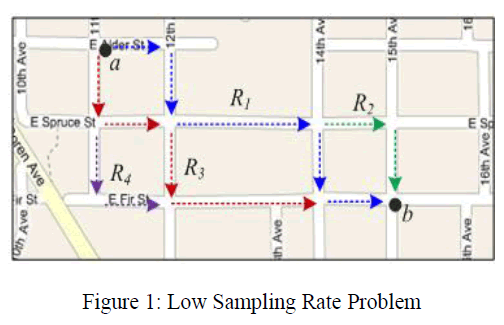 |
| Today technology innovation has made it easy for industries to achieve full capacity utilization. The crux of the problem is whether manufacturing industries are selling right and profitable product in the market. Industries like British Physical Laboratories (BPL), Videocon (Home appliance) and Campacola (Beverage) were lost market space because they were unable to meet customer expectation and severe competition from peer as well. Manufacturing industries are finding different way to improve their profit margin like controlling material consumption[10], improving the operation efficiency ([11], [12], [13], [14]), and selling profitable product [15].The study is further extended to understand customer complaints and link with operational process. Since beverage is a consumable product, customer complaints cause major concern. Complaint related to beverage quality and packaging are dealt with very seriously because the retail price cost is deducted against defective product. This has further affected industries profit as well as product image and market share. From data available on records, most of the complaints are related beverage’s quality, improper capping, label defect and carton damage. To overcome these problems industries should ensure that quality products are produced and marketed with zero defects. Manufacturing industries need framework models, which analyze the customer requirement, and their complaints that will help them to improve the operation and profitability. |
IV. ZERO DEFECT OPERATIONAL MATRIX (ZDOM) |
| When a product is manufactured, some kind of quality defects and wastage are inevitable. To prevent the waste of material and improve product quality, industry must continuously assess systems and revise procedures and policies. The market complaints are analyzed and consulted with industrial experts in which only twenty complaints are found relevant for the study out of forty. They are grouped under the operation value chain, which consists of washing, filling, sealing, labeling and packing Fig.2. The operation starts when bottles are being washed to remove any foreign matter and dust before filling beverage. The filled bottles are sealed with closure. Labels are fixed on the body/neck of the bottle and packed in carton. The proposed ZDOM helps the industry to improve operational issues against customer complaints. ZDOM connects the products attribute with operational attributes. ZDOM ranks the quality parameters based on the customer choice. There are six steps involved to construct the ZDOM. |
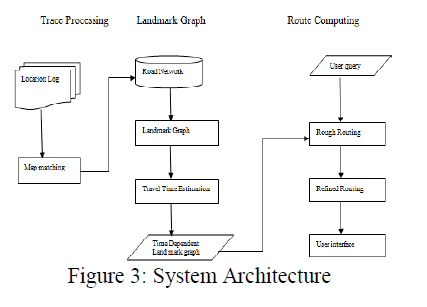 |
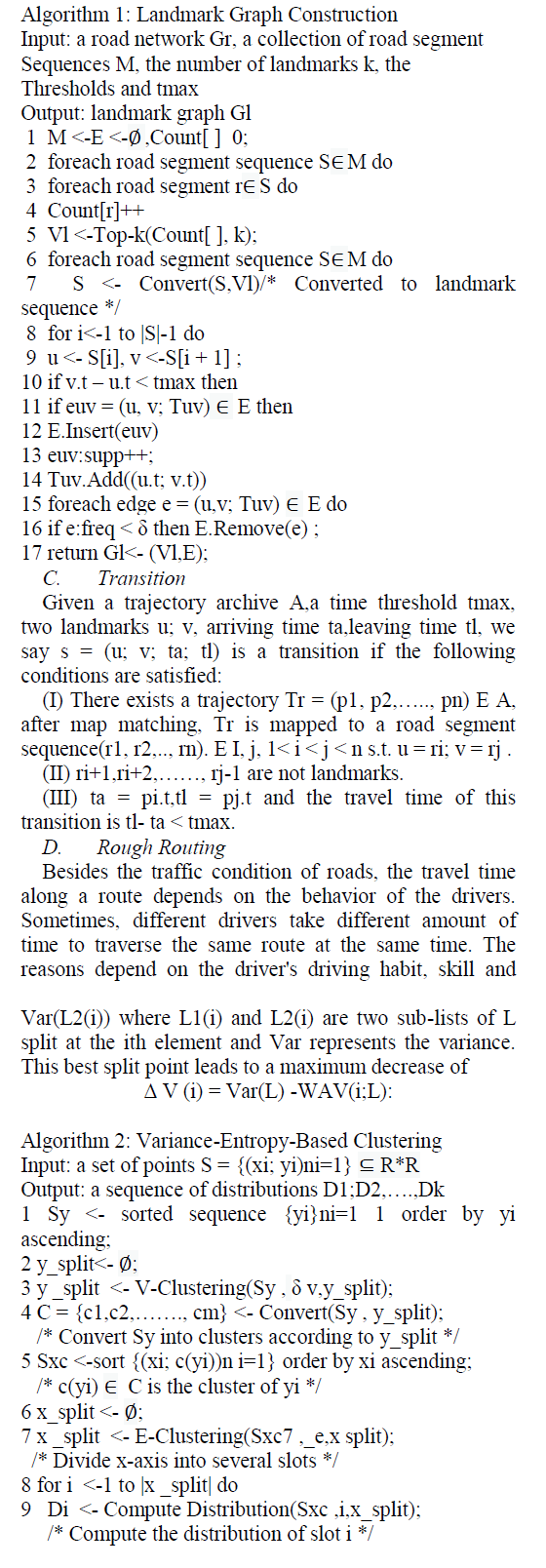 |
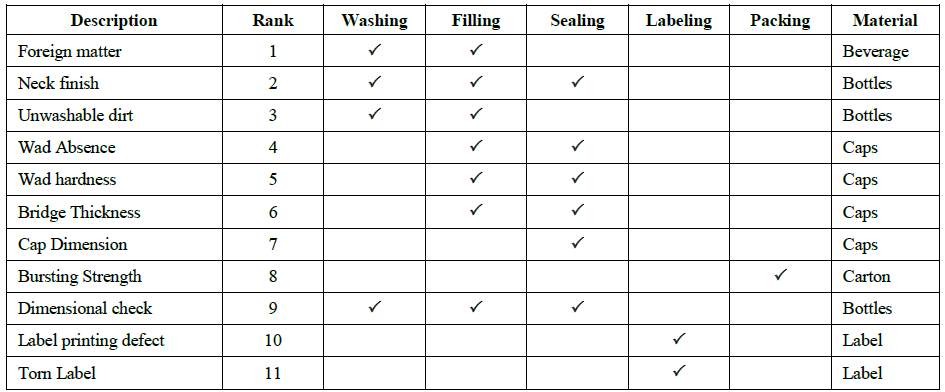 |
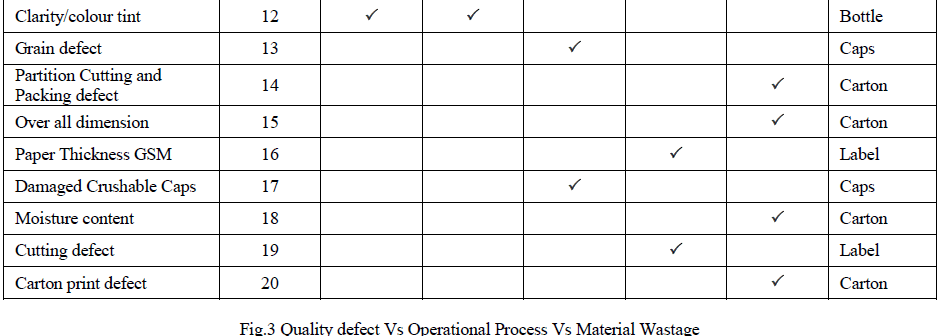 |
V. RESULT AND DISCUSSION |
| The analysis shows the customer preference on product in the order of beverage (0.54), bottles (0.20), caps (0.14), label (0.08), and cartons (0.04). The related cost factor is in the order of beverage (45.14%), bottle (26.22%), carton and mono carton (19.46%), caps (5.77%), and label (3.41%). For successful market free complaints and operation efficiency, industries should concentrate more on beverage, bottles, carton followed by caps and label. Foreign matter ranks first among twenty quality parameters. This causes major wastage on beverage, bottle and caps. This should be avoided by cleaning bottle before filling beverage. Neck finish, un-washable dirt, dimensional check and tint related to bottles quality that also affects the wastage of caps. Next major complaints received from market are related to less quantity of beverage or improper closure. This is due to defect in wad absence, wad hardness and bridge thickness of caps. Caps dimension defect leads to wastage of bottles and caps. Inadequate carton bursting strength influences the wastage of beverage and bottle breakage. Label has less impact on wastage. Quality is to be checked on damage of caps and moisture of carton and label cutting defect on wastage at sourcing point. Carton printing defect score the last. The summary of the result is shown in Fig 3. Foreign matter, un-washable dirt, clarity/ colour tint effect on washing and filling operations and can be improved by checking quality of bottles at source level and replacing filter periodically. Neck finish has effect on filling and sealing. Labeling can be improved by checking the quality of paper thickness, grain direction, cutting defect, printing defect and torn label. Cartons quality are improved by proper dimensional check, adequate bursting strength, removing moisture content, avoiding printing defect and right method of packing operation. |
VI. CONCLUSIONS |
| With the accelerating dynamics of competition, the key to competitiveness lies no longer in employing strategies that have been successful in the past. The real competitive advantages results from a constant process of developing and implementing new strategies that will differentiate the organization from the rest of the industry in which it operates. The ZDOM ensure that every operational process defined by the industry strategies are linked to a set of performance measures in the relevant value chain, which may eventually influence future results. The study has highlighted problem of particular industry. The customer requirement and market complaints varies based on the industry nature. The application of AHP to beverage can be quite different than to a mechanical or on assembled product. The resulting deployments must be tailored even further to express the peculiarities of each industries. Thus, even another food producer might do its AHP differently. Fuzzy logic can be applied to arrive relationship data. This research can be further extended to construct technical relationship of the matrix. |
References |
|